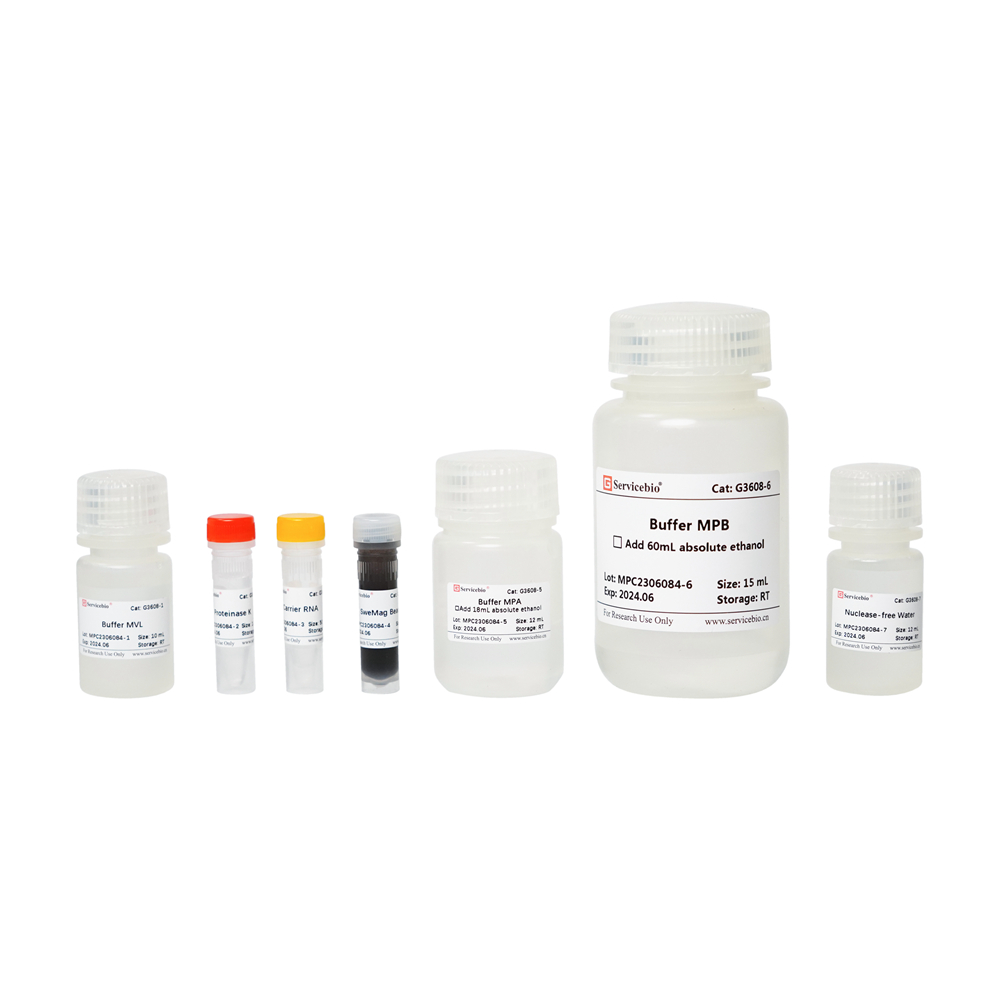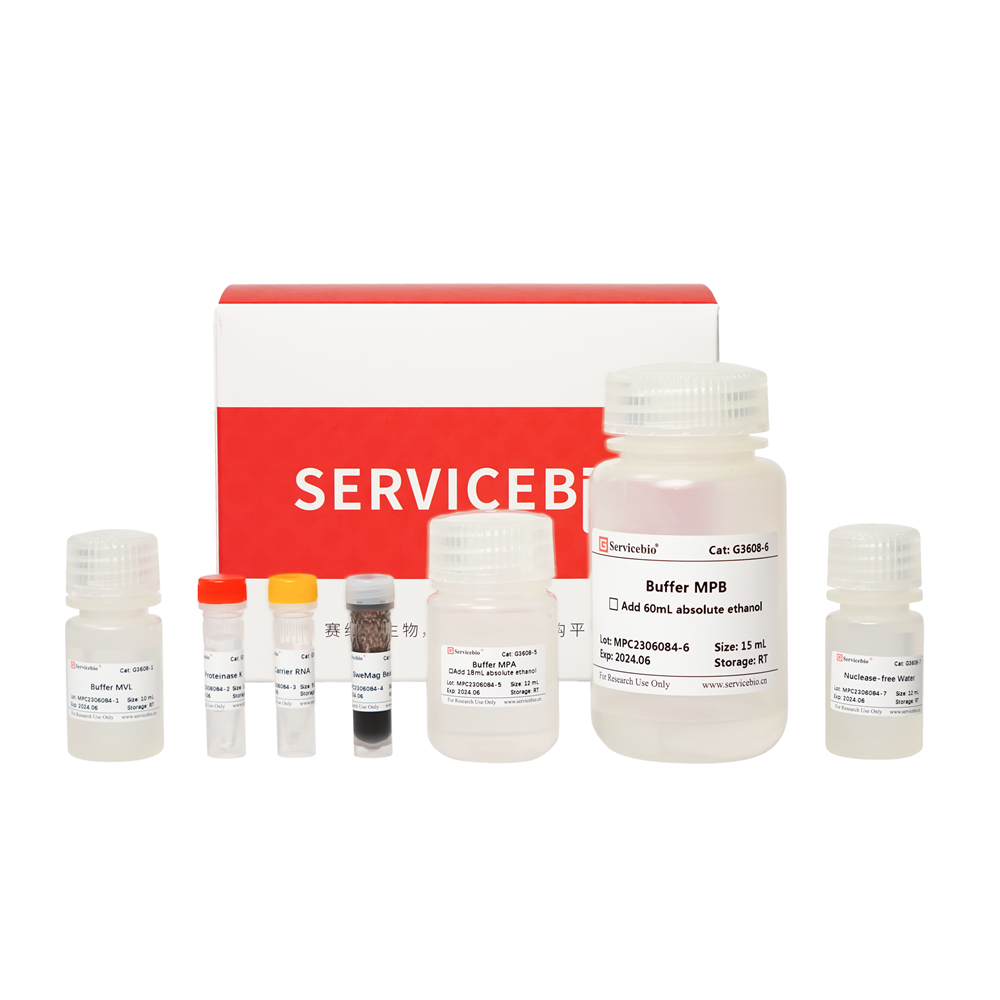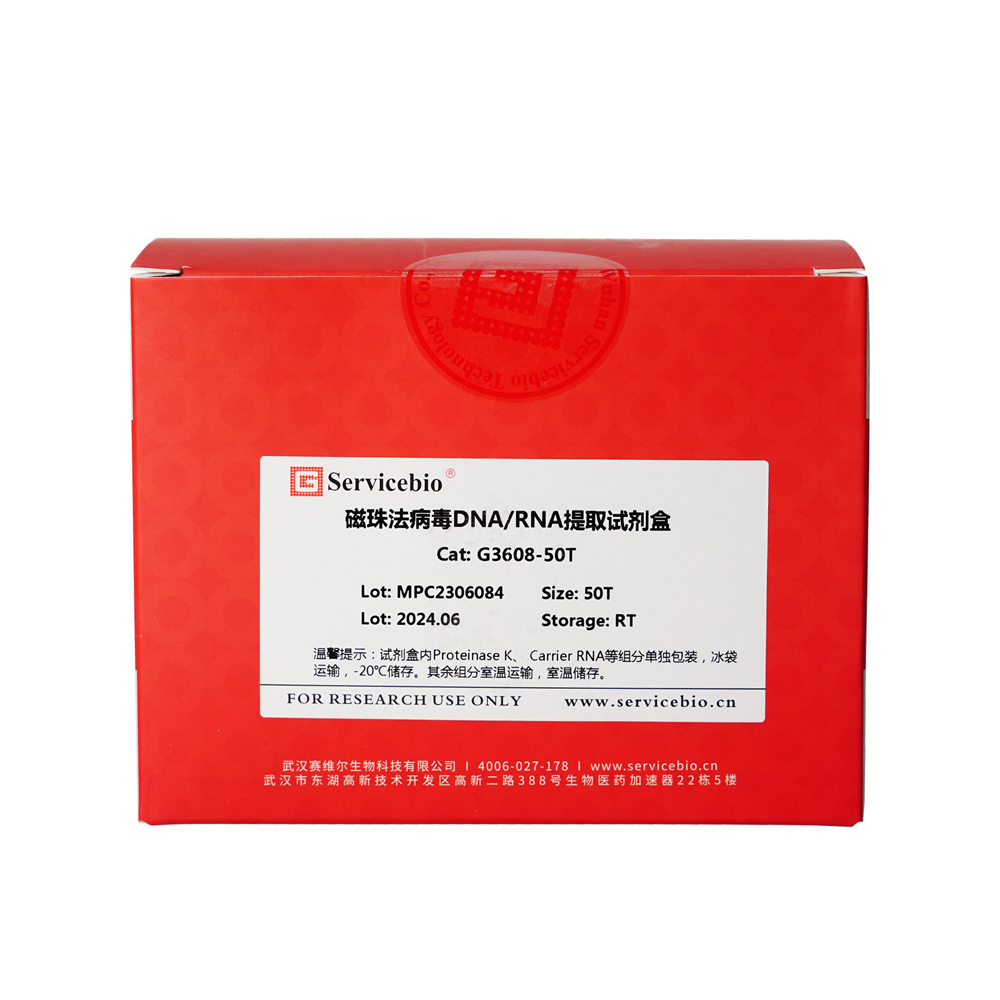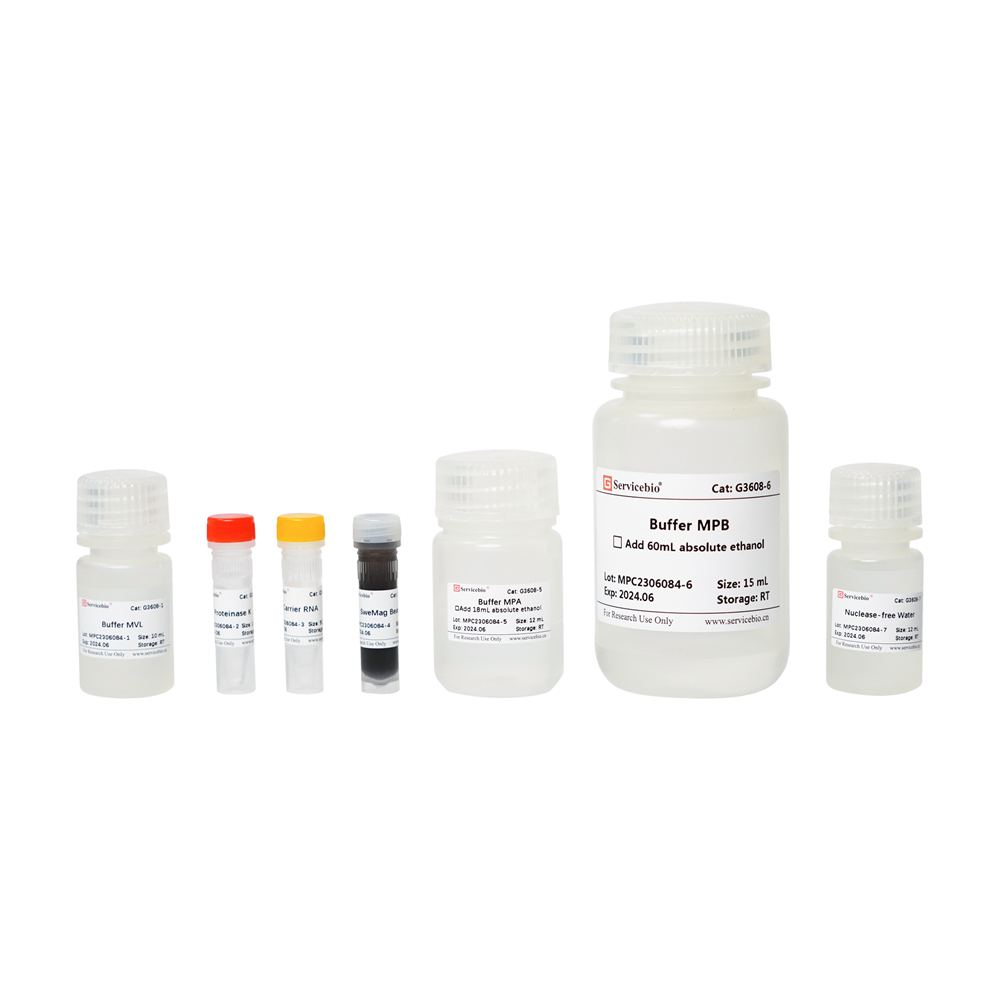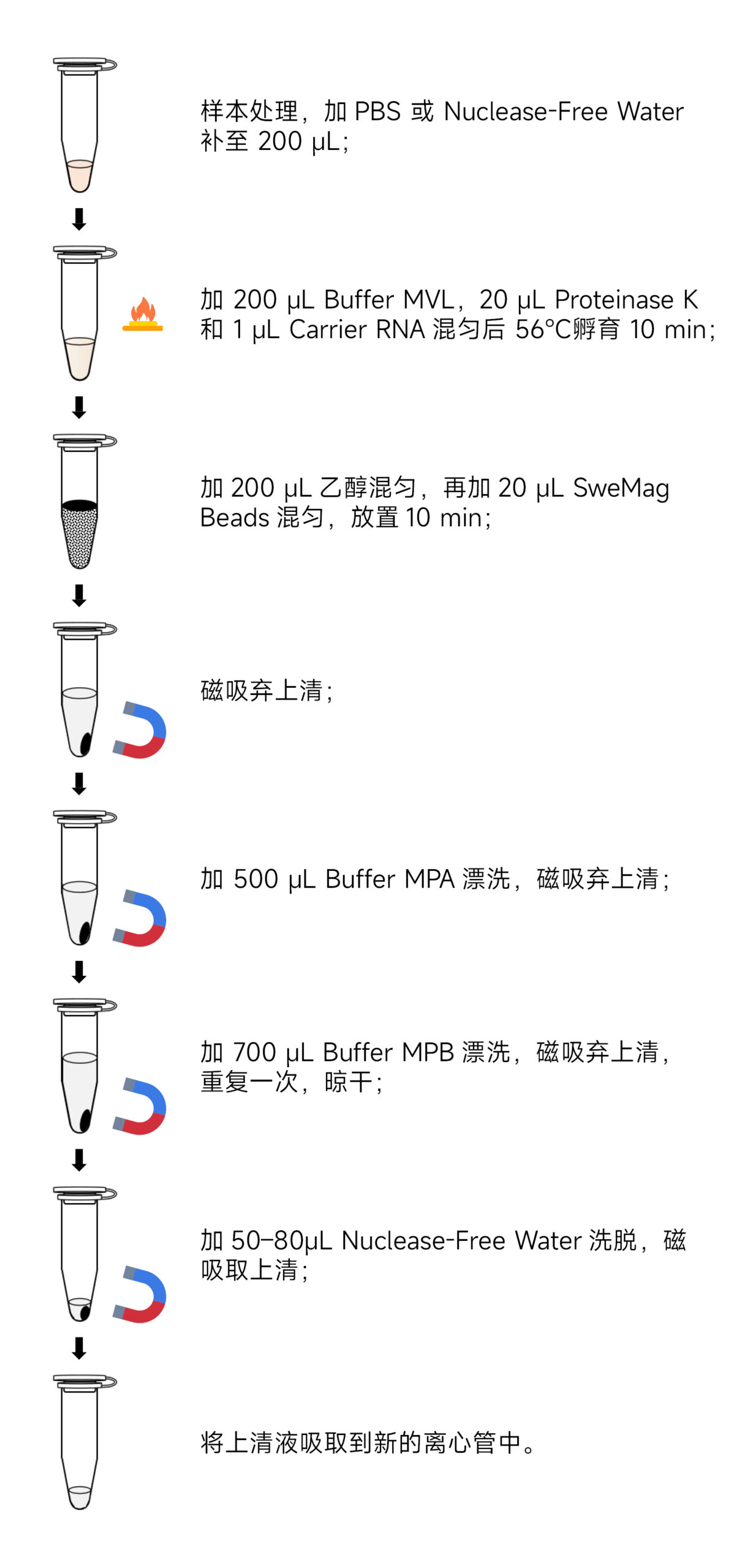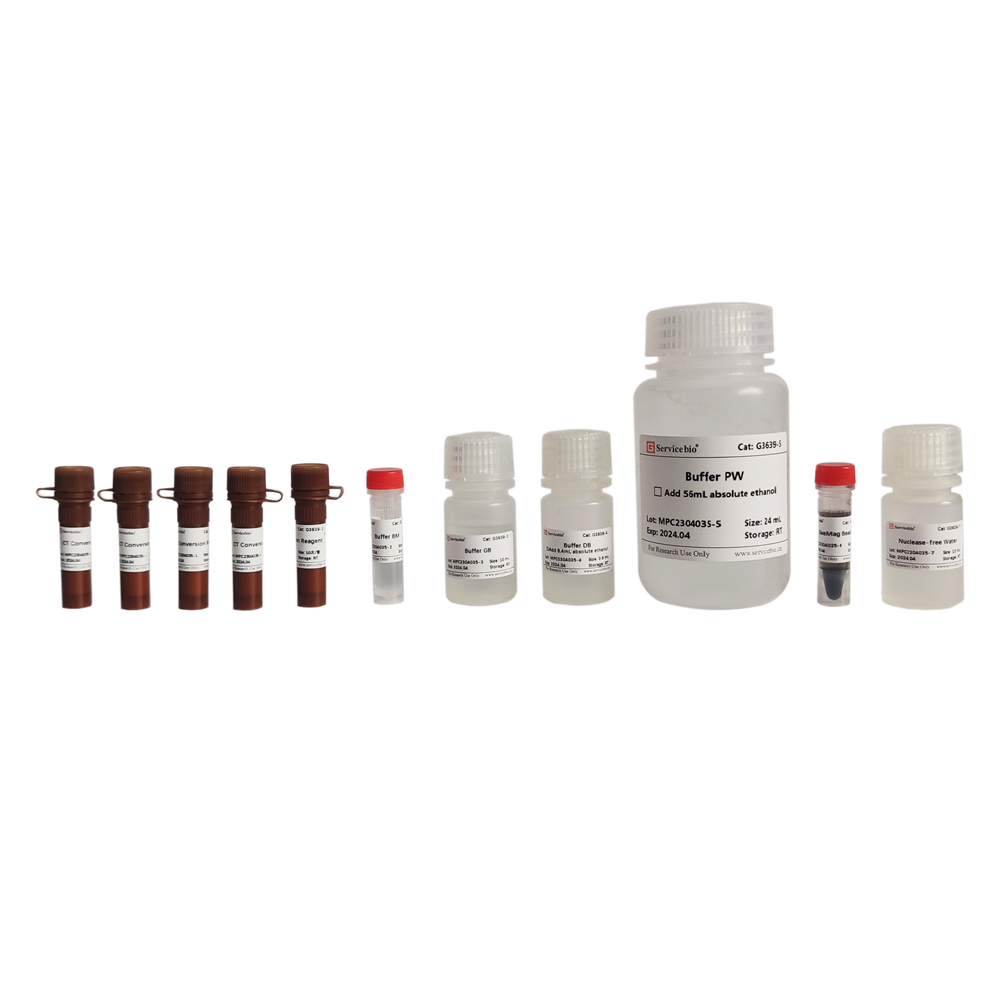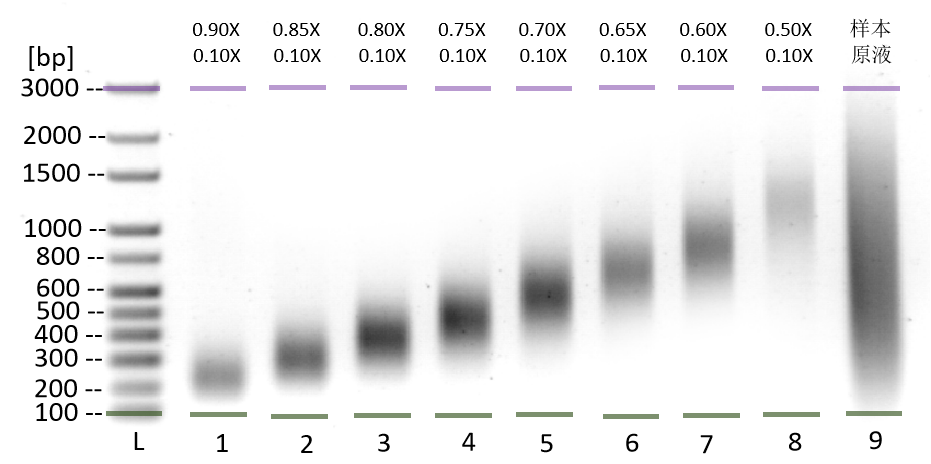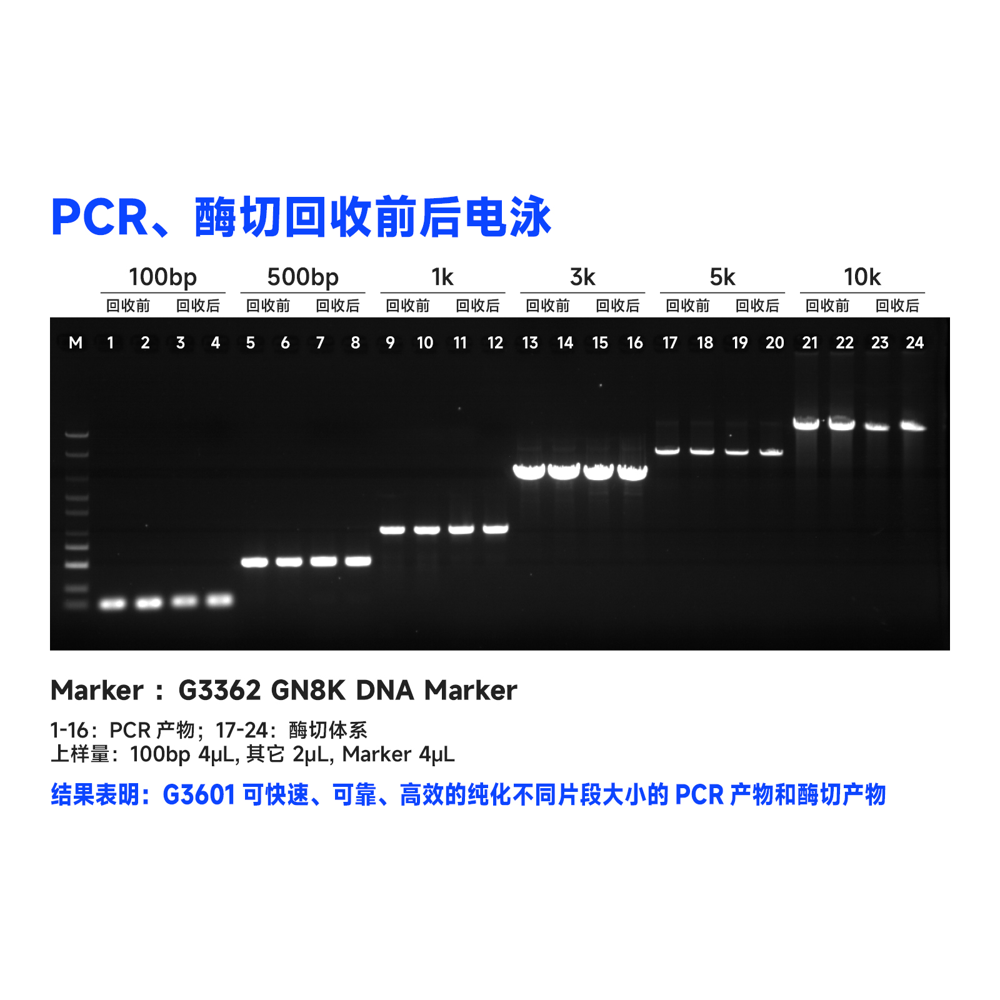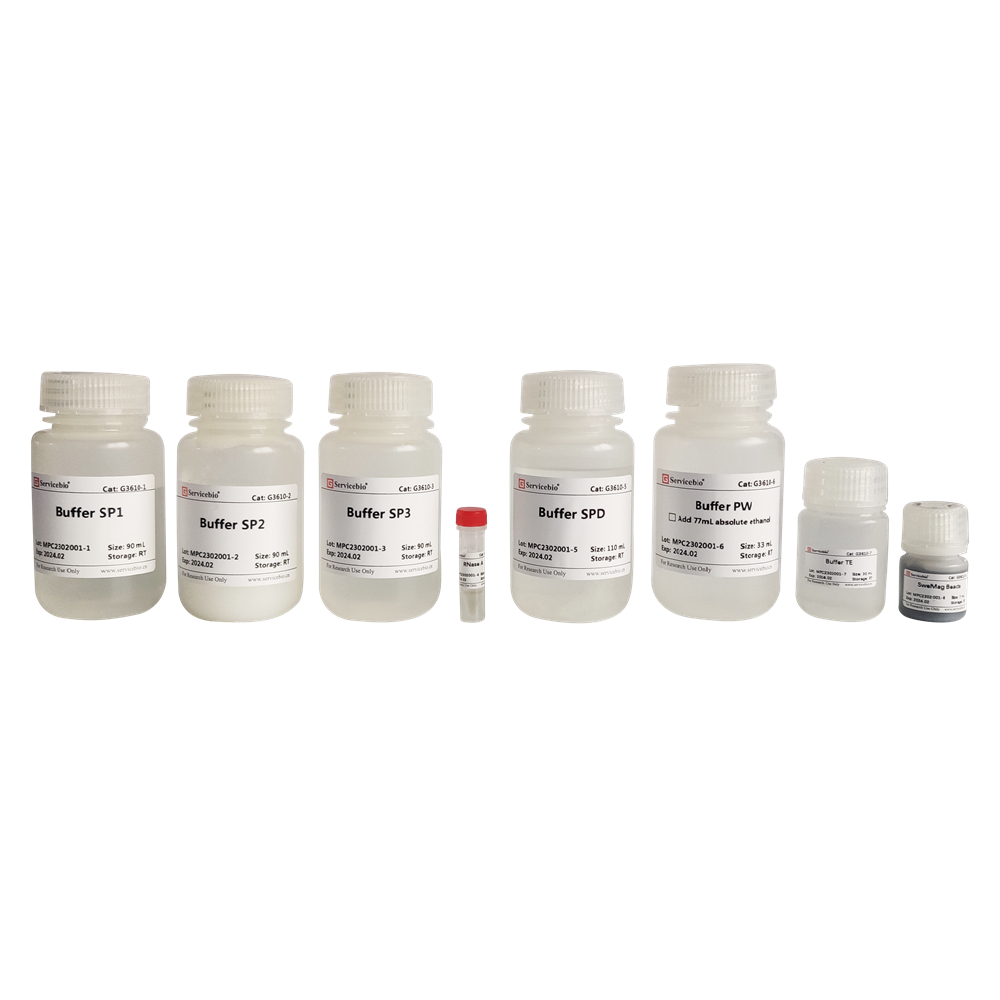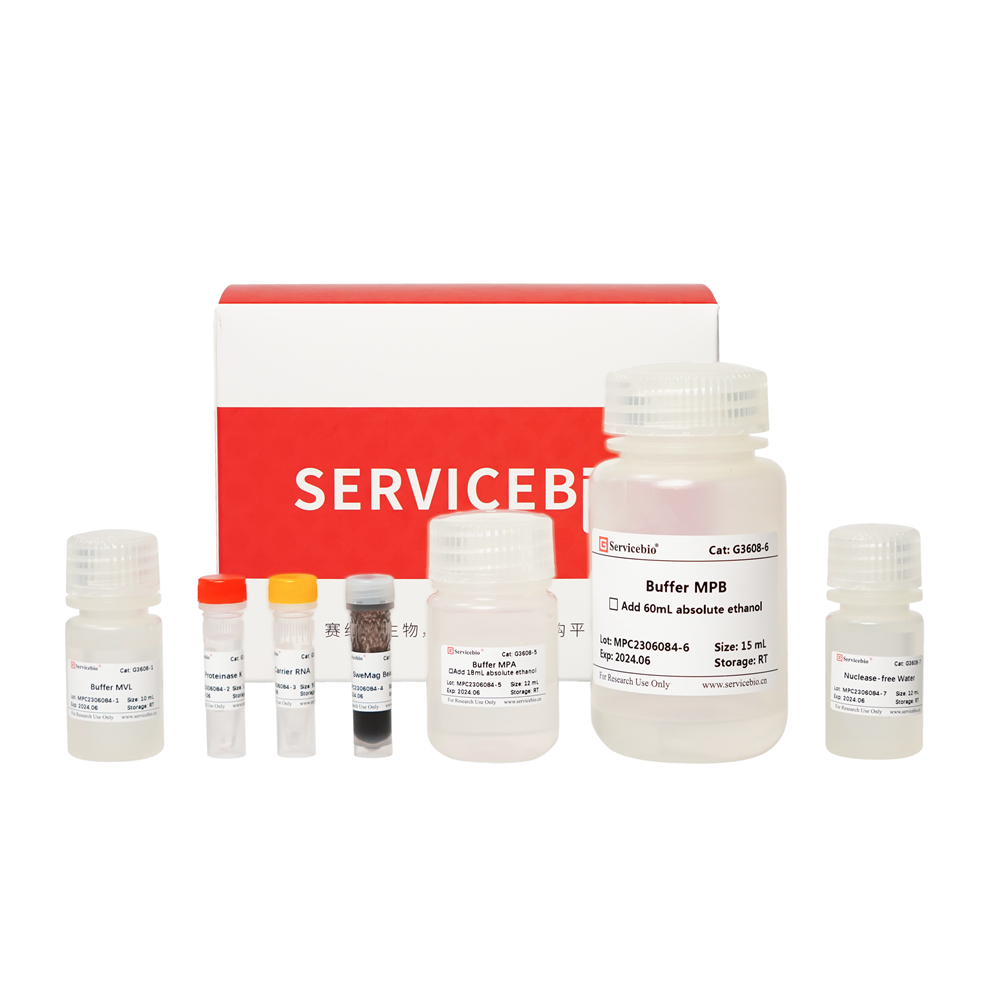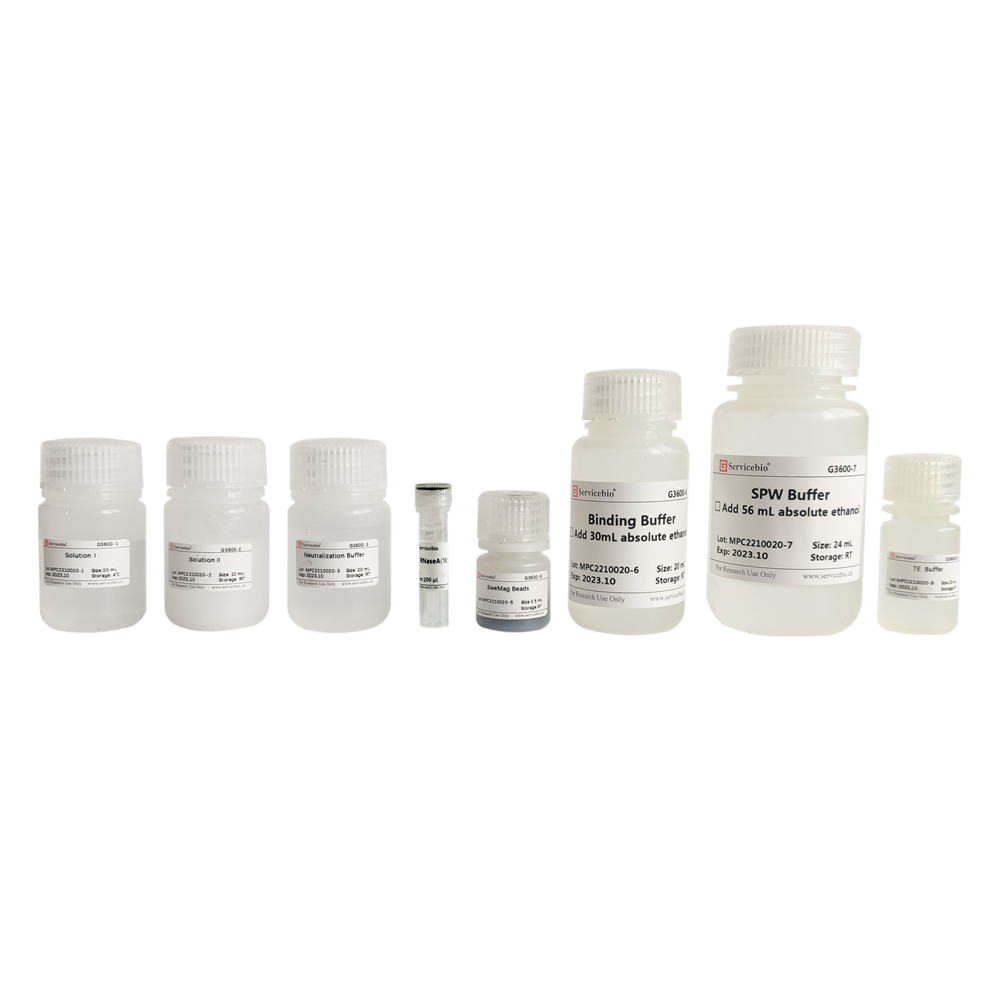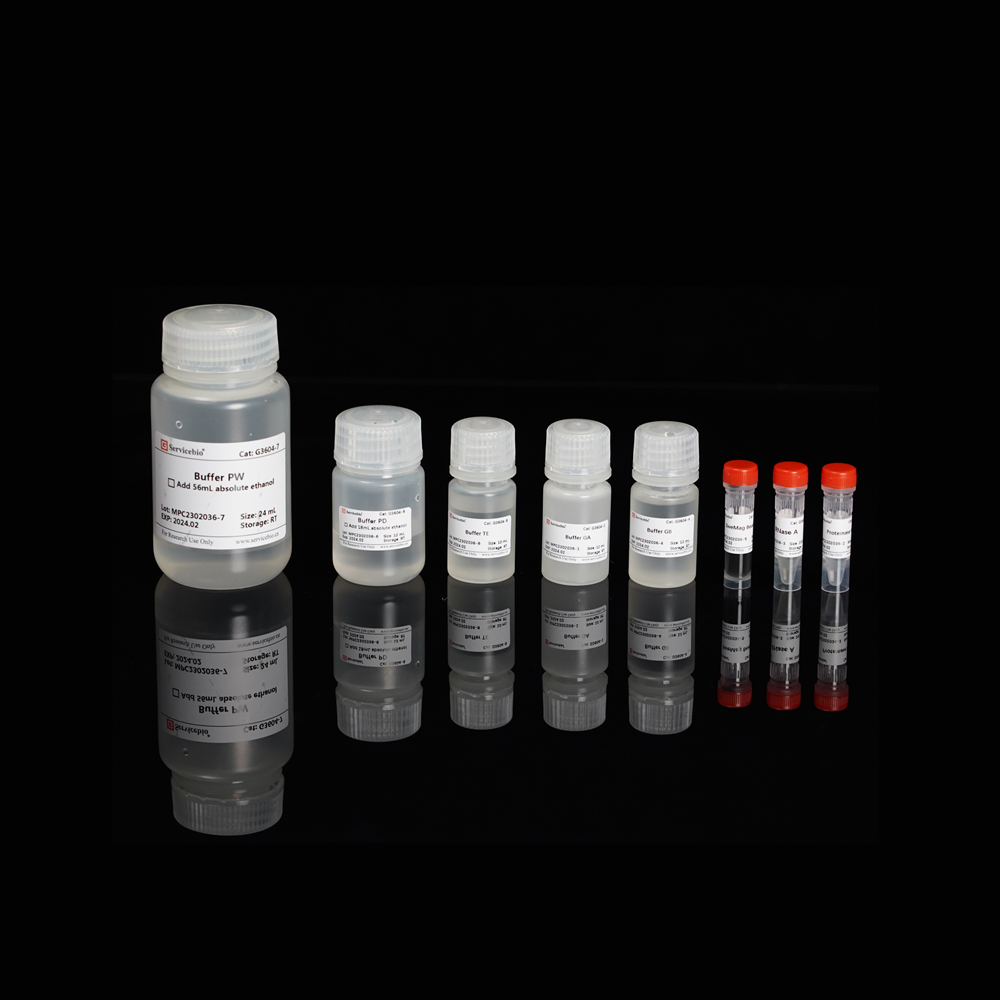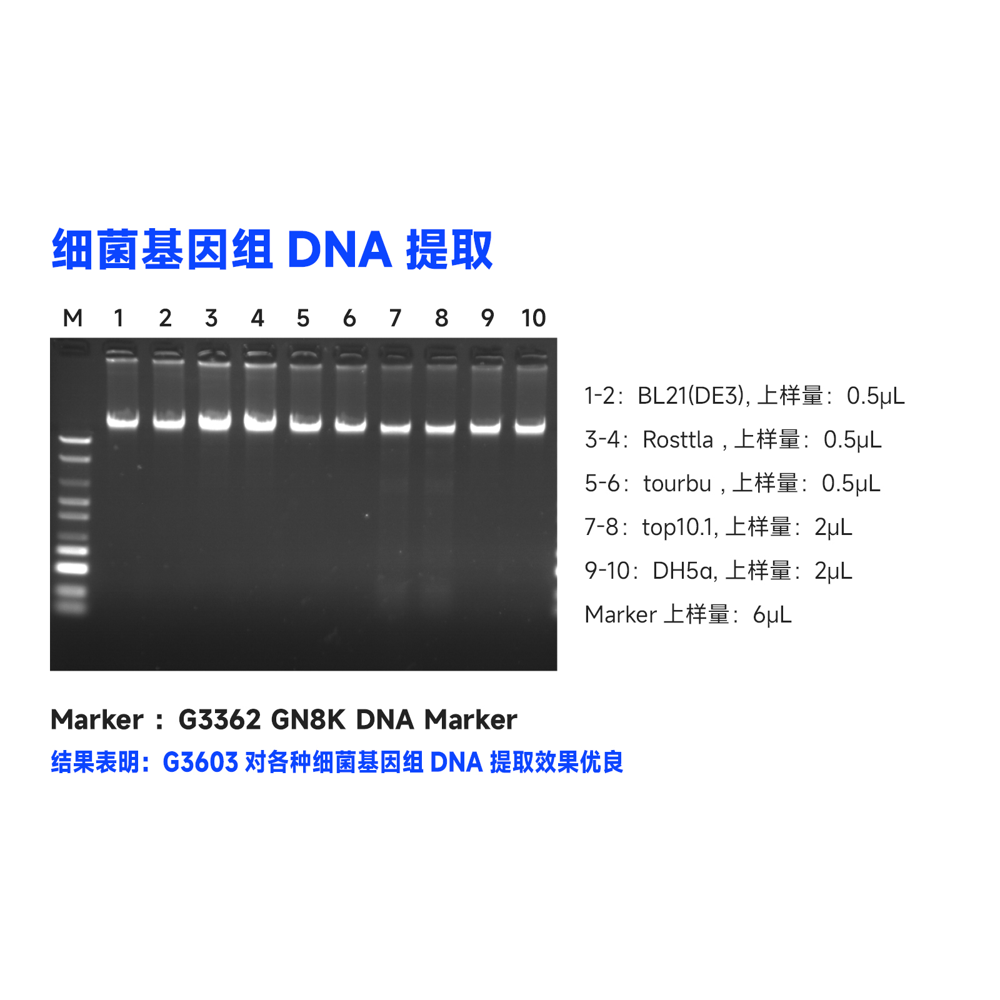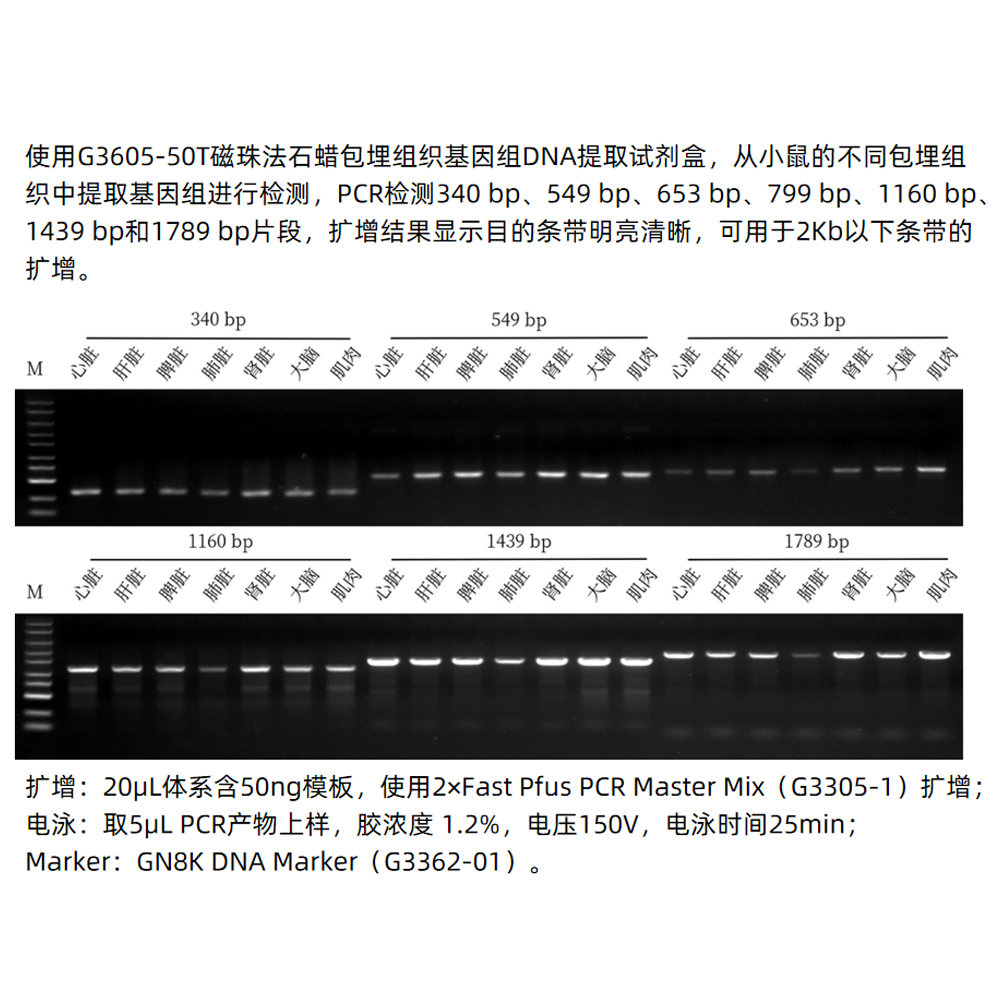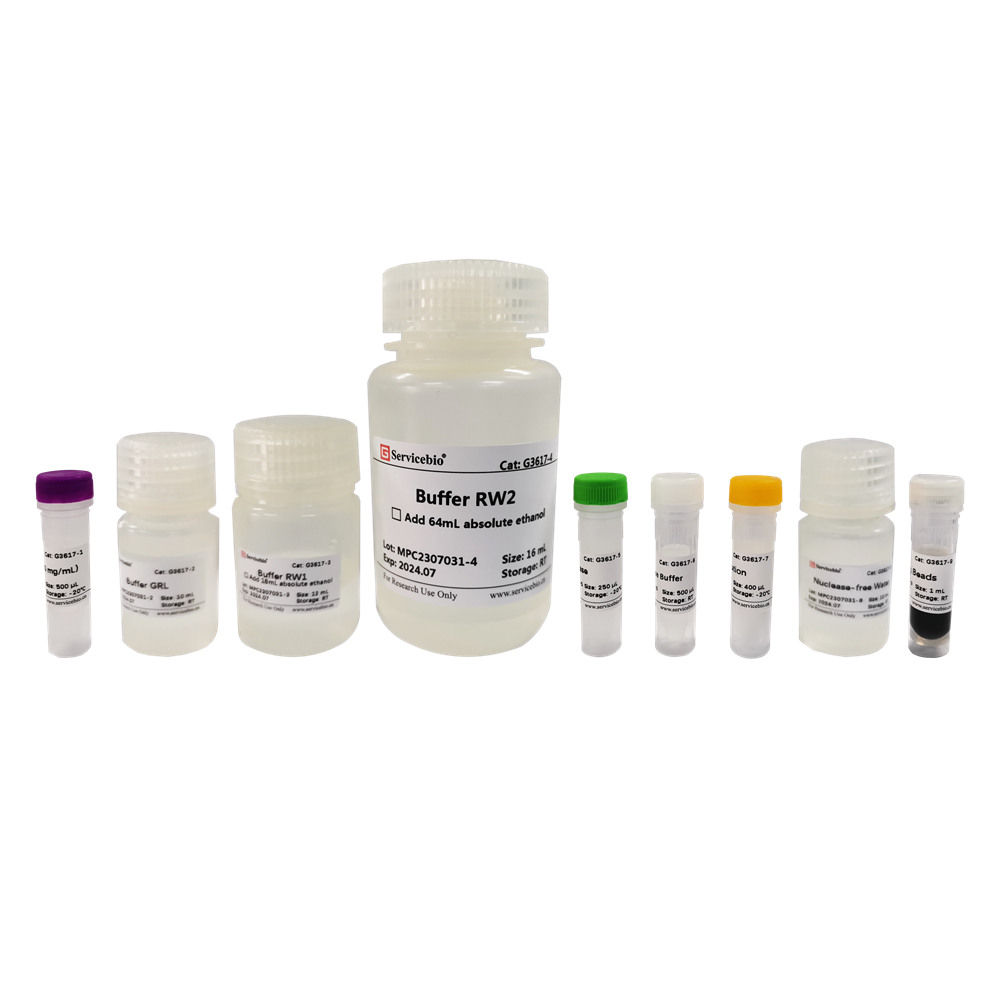Description
The Magnetic Bead-Based Viral DNA/RNA Extraction Kit is a laboratory tool used to extract viral DNA and RNA from samples. This type of kit typically utilizes magnetic bead technology in conjunction with chemical methods to efficiently separate and purify viral DNA and RNA molecules, facilitating subsequent molecular biology experiments and virus detection.
Here are the general characteristics and main components of such a kit:
Key Features:
- Efficiency: These kits typically offer high efficiency in extracting viral DNA and RNA, allowing for highly purified viral nucleic acids from samples.
- Magnetic Bead Separation Technology: Using magnetic bead separation technology, it enables the rapid and reliable separation and capture of viral DNA and RNA without the need for cumbersome centrifugation steps.
- Versatility: Some Magnetic Bead-Based Viral DNA/RNA Extraction Kits can be used for a variety of applications, including virus detection and molecular biology experiments.
Product Information
- Product Name: Magnetic Bead-Based Viral DNA/RNA Extraction Kit
- Product Number: G3608-50T
- Specifications: 50T (referring to 50 tests)
Product Description
This reagent kit is designed for the rapid separation of various viral DNA/RNA from serum, plasma, urine, cell culture supernatants, virus stocks, and infected virus tissues. Using superparamagnetic beads developed in-house, nucleic acids are specifically adsorbed onto the surface of magnetic particles in the presence of a special buffer system. Proteins, cell debris, and other contaminants can be effectively washed away, and high-quality DNA/RNA is finally eluted using Nuclease-free Water. The high-quality DNA/RNA obtained can be directly used for downstream molecular biology experiments such as PCR, cDNA synthesis, RT-qPCR, and more.
Storage and Transportation
- Proteinase K and Carrier RNA: Transported on wet ice and stored at -20°C.
- Other reagents: Transported and stored at room temperature.
- Shelf life is 12 months.
- CompositionHere is the composition of the Magnetic Bead-Based Viral DNA/RNA Extraction Kit:
Component Number Component Volume G3608-50T Buffer MVL 10 mL G3608-1 Proteinase K 1 mL G3608-2 Carrier RNA 50 μL G3608-3 SweMag Beads 1 mL G3608-4 Buffer MPA 12 mL G3608-5 Buffer MPB 15 mL G3608-6 Nuclease-free Water 12 mL – User Manual 1 copy Preparation Before Use
- If Buffer MVL and Buffer MPA have precipitated, heat them at 37°C until fully dissolved, and use them at room temperature after they have returned to room temperature.
- Before the first use, add 18 mL of ethanol to Buffer MPA and 60 mL of ethanol to Buffer MPB.
- Before the first use, aliquot Carrier RNA and store it at -20°C. Avoid repeated freeze-thaw cycles.
- Pre-cool the tissue homogenizer before use.
- Prepare a magnetic rack.
Experimental Steps
- Processing of Virus Samples:a) Serum, Plasma, Urine, Cell Culture Supernatants, and Virus Stock Lysis: Take 10-200 μL of serum, plasma, urine, cell culture supernatants, or virus stock. If the initial volume is less than 200 μL, supplement with PBS or Nuclease-free Water to reach 200 μL.b) Lysis of Infected Virus Tissues: Take 10-20 mg of fresh or ultra-low-temperature frozen infected virus tissue. Place it in a 1.5 mL Nuclease-free centrifuge tube or a dedicated grinding tube containing 2-3 pieces of 3 mm grinding beads (recommended G0203). Immediately place the tube or grinding tube containing the tissue in liquid nitrogen. Then, use a tissue homogenizer (recommended KZ-5F-3D) to thoroughly grind the tissue to a homogeneous state under low-temperature conditions. After grinding, add 200 μL of PBS or Nuclease-free Water.
- Add 200 μL of Buffer MVL, 20 μL of Proteinase K, and 1 μL of Carrier RNA. Mix well and incubate at 56°C for 10 minutes.
- Add 200 μL of ethanol, invert to mix, and then add 20 μL of SweMag Beads (before using SweMag Beads, vortex to disperse evenly). Invert the tube several times until the beads are evenly dispersed.
- Let it stand at room temperature for 10 minutes, mixing with a pipette or vortex mixer 2-3 times during this period to ensure even dispersion of the beads.
- Place the centrifuge tube on the magnetic rack for 30 seconds until the beads are completely adsorbed. Gently invert the tube on the magnetic rack several times to wash off the beads adhering to the tube wall. Discard the supernatant (do not aspirate the beads to avoid affecting extraction efficiency).
- Remove the magnetic rack, add 500 μL of Buffer MPA, and gently pipette to disperse the beads evenly. Place the centrifuge tube on the magnetic rack for 30 seconds, then gently invert the tube on the magnetic rack several times to wash off the beads and salt adhering to the tube wall. Discard the supernatant (be sure to remove all residual liquid inside the centrifuge tube to avoid affecting extraction efficiency).
- Remove the magnetic rack, add 700 μL of Buffer MPB, and gently pipette to disperse the beads evenly. Place the centrifuge tube on the magnetic rack for 30 seconds, then gently invert the tube on the magnetic rack several times to wash off the beads and salt adhering to the tube wall. Discard the supernatant (be sure to remove all residual liquid inside the centrifuge tube to avoid affecting extraction efficiency).
- Repeat step 7.
- Open the centrifuge tube cap and leave it at room temperature for 5-10 minutes to allow ethanol to completely evaporate (to avoid overdrying of the beads, which may affect nucleic acid yield).
- Remove the magnetic rack and add 50-80 μL of Nuclease-free Water. Gently pipette to disperse the beads evenly and let it stand at room temperature for 3 minutes.
- Place the centrifuge tube on the magnetic rack until the beads are completely adsorbed. Aspirate the supernatant into a new Nuclease-free centrifuge tube to obtain high-purity DNA/RNA.
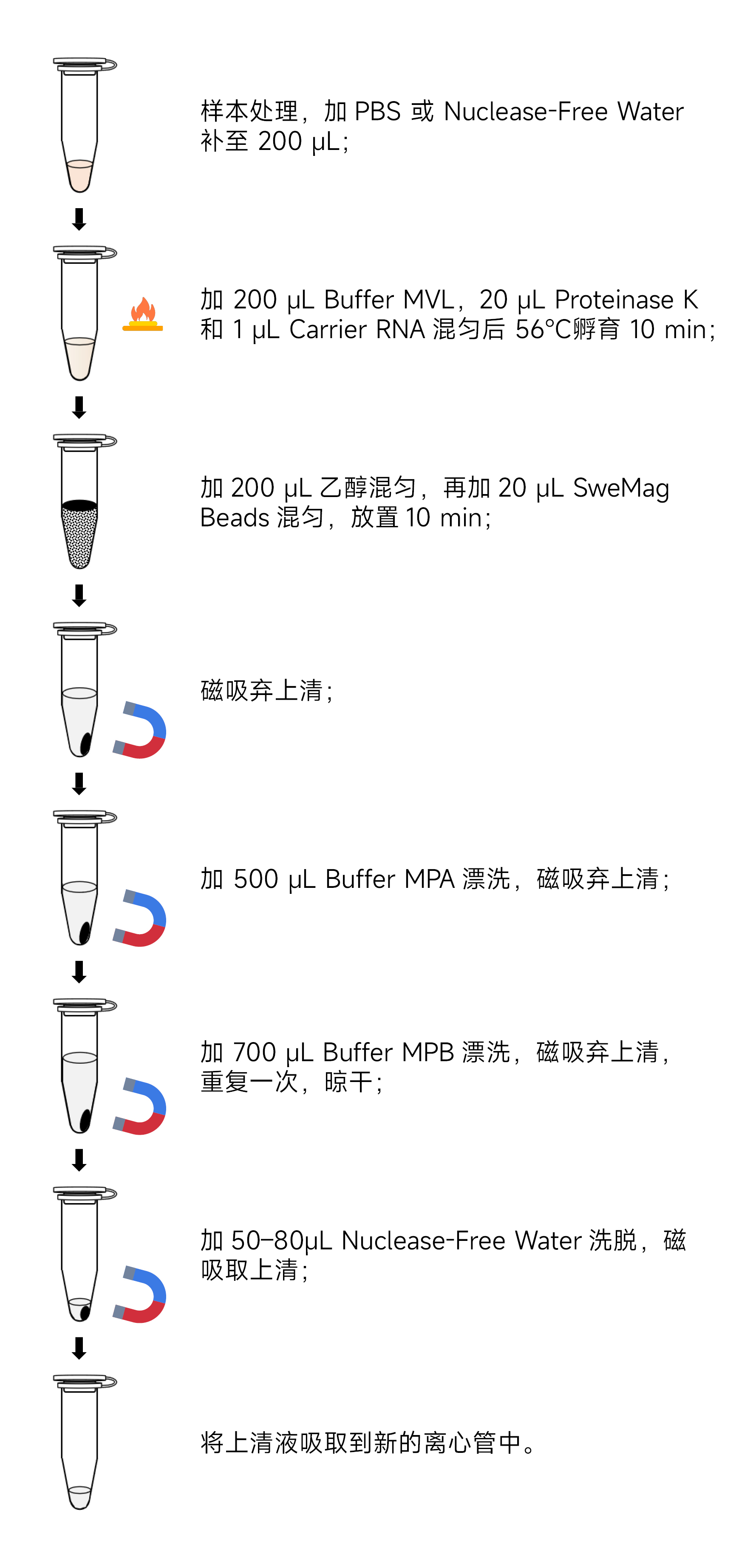 Precautions
Precautions
- Before performing the procedure, carefully read this product manual.
- Due to the addition of Carrier RNA during the extraction process, quantification cannot be performed using electrophoresis or spectrophotometry.
- The Carrier RNA provided in this kit is derived from Escherichia coli and is mainly used to improve the recovery efficiency of trace nucleic acids and prevent the degradation of trace RNA obtained. If the PCR primers have high homology with Carrier RNA, it is advisable to redesign the primers.
- Magnetic beads may settle, so vortex them to ensure even dispersion before use.
- Avoid freezing the magnetic bead suspension during storage.
- Before adding magnetic beads to the sample, ensure thorough mixing of the sample with other reagents.
- Before elution, allow ethanol to completely evaporate to avoid residual ethanol affecting downstream experiments.
- For your safety and health, wear a lab coat and disposable gloves when handling.
This product is for research purposes only and is not intended for clinical diagnosis.

